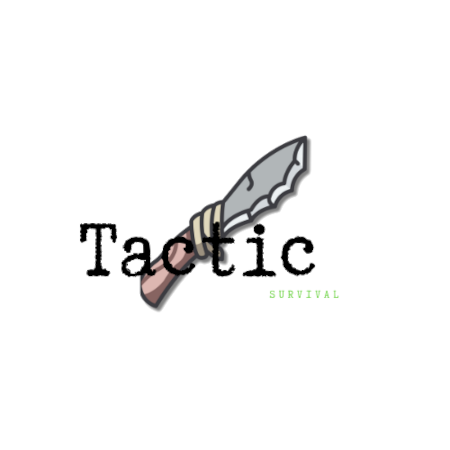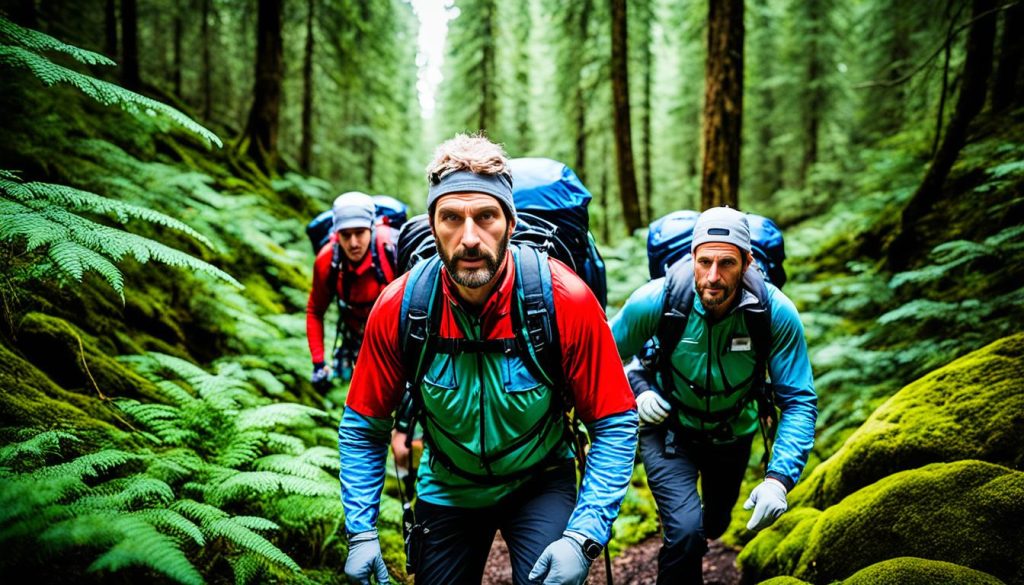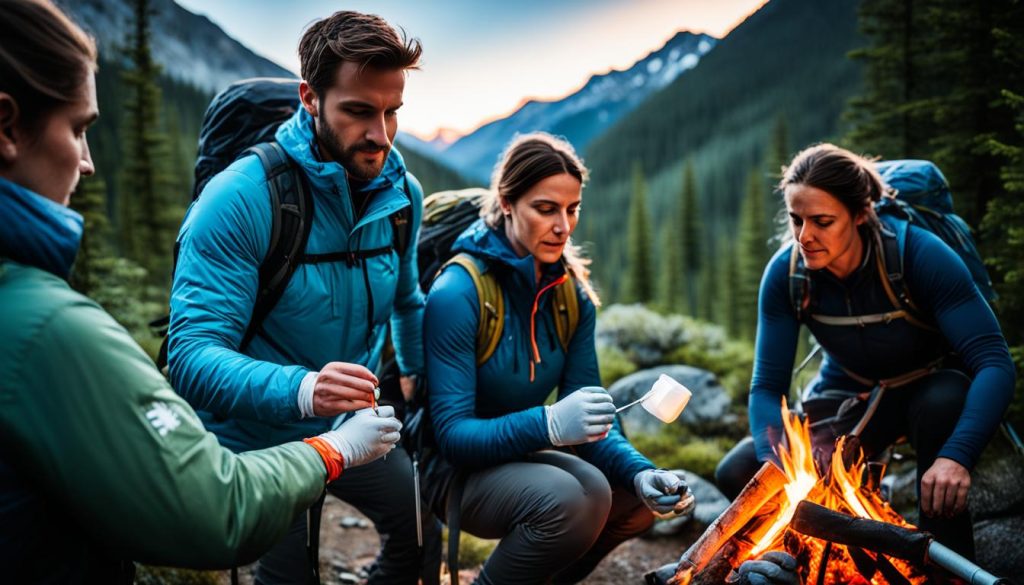Over 1,000 search and rescue missions happen in the U.S. wilderness each year. These areas are far from normal medical help. Therefore, knowing advanced medical skills can save lives.
Learning wilderness medicine is key for hikers, searchers, and doctors. This guide will show why and how to get trained. With the right knowledge, you can help in times of nature’s danger.
Key Takeaways:
- Wilderness medicine is crucial for anyone venturing into remote wilderness areas.
- Having advanced medical skills can make a significant difference in a wilderness emergency.
- Training programs and certifications in wilderness medicine can equip individuals to provide medical care in challenging environments.
- Organizations like NOLS, REI, and Wilderness Medical Associates International offer comprehensive wilderness medicine training programs.
- Wilderness First Aid (WFA) and Wilderness First Responder (WFR) certifications are highly recommended for outdoor enthusiasts and professionals.
The Importance of Wilderness Medicine
Accidents or sudden health issues in the wild can mean a long wait for help. Wilderness medicine teaches how to care for someone where normal medical care isn’t close. It helps people treat everything from a sprained ankle to a bad allergic reaction quickly. This knowledge is key when days might pass before professional help can reach you.
For those who love the outdoors, risky activities can lead to serious health challenges. Without easy access to healthcare, handling emergencies becomes vital. Wilderness medicine offers the tools to manage these moments and help until help from a doctor arrives.
Wilderness medicine is quite different from city medicine. It focuses on using what you have to care for someone. This involves knowing how to improvise with tools, use resources wisely, and adapt to the situation. These are must-have skills for those who venture into the wild.
Backcountry Healthcare and Remote Medical Care
“In wilderness medicine, the ability to provide remote medical care is a fundamental skill that can save lives in critical situations. When medical help is hours or even days away, individuals with wilderness medicine training can respond effectively, stabilize injuries, and provide necessary care until advanced medical assistance can arrive.”
Help is often slow to reach remote places. A small injury can get serious without quick treatment. Wilderness medicine helps people quickly assess and manage different health crises until they can get professional care.
These courses don’t just cover first aid. They prepare you for many outdoor health problems and how to use what’s around to help. This includes handling common injuries and knowing the signs of trouble, like when someone is too cold or too hot.
Understanding wilderness medicine makes outdoor adventures safer. It gives people the confidence to explore while being able to take care of themselves and others in an emergency.
| Benefits of Wilderness Medicine Training | Importance for Outdoor Enthusiasts | Relevance in Remote Locations |
|---|---|---|
| 1. Enhanced skills and knowledge in medical emergencies | 1. Ensures the safety of individuals engaging in outdoor activities | 1. Provides immediate medical care in the absence of nearby healthcare services |
| 2. Ability to assess injuries, illnesses, and emergencies accurately | 2. Enables prompt and appropriate response to injuries and illnesses | 2. Addresses critical medical situations before advanced help arrives |
| 3. Improved comfort and confidence in the wilderness | 3. Mitigates risks and potential complications in the absence of immediate medical assistance | 3. Ensures proper stabilization and care during evacuation or transport |
| 4. Resourcefulness in utilizing limited medical supplies and improvising equipment | 4. Facilitates safe and informed decision-making in challenging situations | 4. Adapts medical care to the unique demands of remote environments |
Wilderness Medicine Training Programs
When it comes to wilderness medical training, various esteemed organizations step up. They provide a range of courses and certifications. Their aim is to prepare you for medical crises in tough, far-flung places. You can start with basic first aid in the wild and move up to advanced medicine for expeditions.
NOLS, REI, and Wilderness Medical Associates International are big in the field. They offer different ways to train you. Let’s explore what each one brings to the table.
NOLS Wilderness Medicine
National Outdoor Leadership School (NOLS) brings you courses like the Wilderness First Responder (WFR) certification. This program is thorough, covering many topics. You’ll learn how to check patients, care for wounds, make splints, and conduct evacuations. The learning is hands-on and aims to get you ready for real wilderness challenges.
REI Wilderness Medicine
REI, famous for its outdoor gear, also coaches in wilderness medicine. It’s perfect for hikers, guides, and adventure lovers. Their courses roll out practical skills through real-life scenarios. So, you’ll cover first aid in the wild, keeping clean outdoors, and thinking on your feet medically. These sessions are all about making you feel confident to face emergencies outside.
Wilderness Medical Associates International
Wilderness Medical Associates International (WMA) is right up there in teaching wilderness medicine. Their focus is sharp on real-world skills needed in the wild. The Wilderness First Responder (WFR) course is their highlight. You’ll learn injury and illness care, plus how to decide when to evacuate someone. It’s all about being able to act when far from usual medical help.
These training options give you what you need to deal with medical troubles far from civilization. Once you’re through with them, you’ll have the know-how and courage to offer necessary medical aid in the wild.
| Organization | Certification Offered | Topics Covered | Training Approach |
|---|---|---|---|
| NOLS Wilderness Medicine | Wilderness First Responder (WFR) | Patient assessment, wound care, improvised splinting, evacuation techniques | Practical and immersive |
| REI Wilderness Medicine | Wilderness First Aid | Wilderness first aid, backcountry hygiene, medical improvisation | Practical scenarios and hands-on skills development |
| Wilderness Medical Associates International | Wilderness First Responder (WFR) | Patient assessment, injury and illness treatment, evacuation decision-making | Practical skills and decision-making in real-world situations |
Wilderness First Aid Certification
Wilderness First Aid, or WFA, is the first step in learning medicine in the wilderness, perfect for outdoor folks and backcountry lovers. These courses teach the key first aid that you need away from civilization, like CPR, caring for wounds, and helping with outdoor fun.
The courses are made for hiking, camping, and skiing, among others. They focus on problems you might face outdoors. WFA helps you know how to act in tough spots, answering common health problems that could pop up.
WFA courses last from 24 to 40 hours. You get to do lots of activities that feel like real emergencies. This helps you get better at solving problems in tough, far-off places.
When you finish your WFA test, you earn a special certification. This paper says you know how to give fast, good medical help in the wild. Having this paper can make outdoor adventures safer for you and your friends.
The price of WFA courses can change based on the place that teaches them. They usually cost anywhere from $100 to $400. But, keep in mind, spending on this kind of learning is smart for anyone who loves outdoor activities.
Course Duration and Format
WFA classes range from a few days to a full week. This depends on how much you learn and do. They mix real-life situations with learning in a classroom, making the lessons complete.
The Wilderness First Responder (WFR) course is deeper and takes longer. It lasts 9-10 days. You learn theory mixed with hands-on skills for all kinds of medical emergencies in the wild.
If you like learning partly online, there’s a WFR hybrid course. With 30-40 hours online and 5 days in-person, it’s a flexible choice. The online part lets you study at your own speed, and then you practice in real life for a more complete learning experience.
| Certification Benefits | Accreditation | College Credits | Recognition |
|---|---|---|---|
| Upon completion, obtain Wilderness First Responder (WFR) certification recognized by industry professionals | Pre-approved for 70 hours of EMT Continuing Education Hours by the Commission on Accreditation of Pre-Hospital Continuing Education (CAPCE) | Approved for 3 college credits through the University of Utah and 3 college credits through Western Colorado University | Recognized by the American Camp Association and the United States Coast Guard to meet specific certification standards |
| A comprehensive curriculum covering a wide range of medical topics and scenarios | Approved for Fellowship of the Academy of Wilderness Medicine (FAWM) credits through the Wilderness Medical Society |
Wilderness First Responder Certification
Getting a Wilderness First Responder (WFR) certification is great for outdoor pros. It’s perfect for those in search and rescue, guiding, and leading trips. You learn advanced medical skills to help in tough and faraway places.
WFR classes are deep and cover lots of medical topics. You learn how to deal with trauma, help in environmental crises, and decide when someone needs to be taken out fast. These lessons are key when quick care is a must and hospitals are far.
After a WFR course, you’ll feel ready to act in medical emergencies. You can tell how bad an injury is, give the right help, and make sure the person is okay until more help comes.
Benefits of Wilderness First Responder Certification
If you’re in Survival Med, have a WFR, or work outdoors, you gain a lot from this certification.
- Enhanced Skills: WFR teaches you advanced medical skills tailored for the wild.
- Improved Safety: You can handle medical crises, making outdoor activities safer for everyone.
- Increased Employability: Employers like hiring those with WFR because of their medical skills and ability to respond in tough spots.
- Higher Quality of Care: WFR-certified people offer better care, making outdoor experiences better for all.
- Recertification Opportunities: You can re-up your WFR certification every 2-3 years to keep your skills sharp.
Example of Wilderness First Responder Certification Course Topics
In WFR class, they go over lots of medical info you might need outdoors. You learn skills like:
- Patient Assessment: Figuring out how hurt a person is, what’s life-threatening, and how to help first.
- Wound Management: Cleaning, sanitizing, and dressing wounds well.
- Fracture Management: Putting on splints right to cut pain and more damage risk.
- Environmental Emergencies: Spotting and handling things like hypothermia, heatstroke, and altitude sickness are big parts of this training.
- Medical Decision Making: Figuring out the best patient care and when to move them, often in hard-to-reach spots.
- Evacuation Techniques: You learn safe and fast ways to get people to medical help in wilderness areas.
With a Wilderness First Responder certification, you’re prepared for medical problems out in the wild. You can give critical care and help make outdoor trips safe and successful.
Conclusion
Knowing wilderness medicine is crucial for outdoor lovers. It can save lives in the wild. This includes everyone from hikers to guides and doctors.
Getting wilderness medicine training is a smart move. It prepares you to handle emergencies in the wild. This means being ready for any health crisis during adventures.
Finding the right training program is important. It should fit what you need and want to learn. This knowledge helps you keep safe and help others enjoy the wilderness safely. Stay ahead of the game with the latest safety methods. This makes you more than prepared. It makes you a hero in the wild.
Remember, the great outdoors is full of wonders. But, it can be risky too. The key is being prepared. This ensures that everyone has a fun and safe time outdoors.


